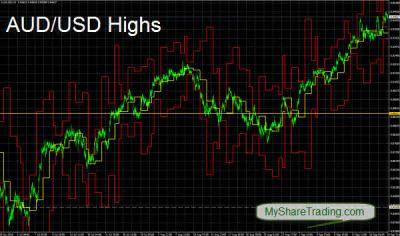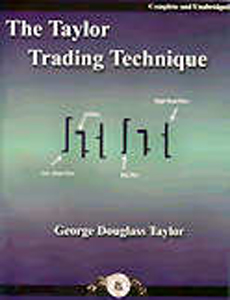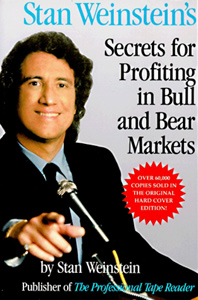Australian Dollar Soaring High

Further Reading
The Australian dollar is soaring high, with the AUD/USD cross rate reaching a high of 94.94 US cents just after midnight Sydney time, topping the two year record achieved on Friday of 94.69 US cents. In the past three years, the Australian dollar had averaged at 84.6 US cents. The Australian dollar hasn’t seen these price levels since it reached a 24 year record in 2008.
The Aussie dollar received a boost from Reserve Bank of Australia (RBA) governor Glenn Stevens commenting that local interest rates were likely to rise. A higher interest rate increases international investor demand for the Australian dollar which results in a rising AUD. The RBA is scheduled to release the minutes of its board meeting where they had chosen to keep the official cash rate at 4.5 percent. The notes of these minutes have the power to influence the Aussie dollar.
Gold is another security seeing record highs. Gold futures for December delivery increased to $US3.30, or 0.3 per cent, to settle at $US1280.80 an ounce on the Comex in New York. Earlier, the gold price reached a record $US1285.20. Gold for immediate delivery climbed to an all-time high of $US1283.80. Gold is traditionally bought as a hedge against rising consumer prices (inflation).
There is a theory that the US stimulus programs aimed to grow the US economy may erode the value of the US dollar and boost demand for alternative investments such as gold and the Australian currency. Later tonight, the US Federal Reserve may suggest the need to inject more stimulus into the US economy.
For you technical chartists out there wondering what the technical indicator the chart is showing: Here is a larger screenshot of the AUD/USD chart above. The red and yellow lines are a custom Average True Range (ATR) indicator and is traded on the theory that when price reaches an extreme point, price always regresses back to the mean. The indicator doesn't get too many triggers as you can observe on the chart.
- How to Trade Forex and Gold Options
- How to Trade the Gold Price and Profit!
- Forex Trading the EUR/USD Pair € EURO and $ US Dollar
- How to Trade Stock Market Indices S&P500
- How to Trade Crude Oil
- Forex Trading Psychology
- What Are Broker Recommendations?
- Free Tickets to Trading & Investing Seminar & Expo ($18) Brisbane 2013
- Stock Calc App
- All About Warrants
- Introduction to Exchange Traded Funds
- Introduction to Exchange Traded Funds: Features
- Introduction to Exchange Traded Funds: Domestic ETFs
- Introduction to Exchange Traded Funds: International ETFs
- Exchange Traded Commodities
- Australian Stock Scan
- Australian Online Share Trading
- List of Trading Books
- Interesting Thoughts about the Australian Dollar
- What's the Meaning of Hawkish?
- Do You Know How To Use the P/E Ratio
- Trading, Religion and Politics - Do They Have Anything in Common?
- Shares that are Volatile that Double and Half in the Short Term
- Telstra (TLS) T3
- Margin Call by E-mail
- The Cost of Holding a Position
- Lack of Disclosure: Compensation from ASX Listed Company
- Unrealistic Returns and Benchmarks
- CMC Markets Down
- Quality versus Quantity Forex Trading
- Woolworths 1H Sales $30.7bn up 3.2%
Date added 31-01-2013 - ASIC Fines CommBank's CommSec
Date added 25-09-2012 - Industry Super Network Calls to Ban High Frequency Trading (HFT)
Date added 22-09-2012 - NAB Launches Online Share Trading Platform
Date added 19-09-2012 - Reserve Bank of Australia Says 23 Countries Holding AUD
Date added 18-09-2012 - Australia Post Digital Mailbox
Date added 10-09-2012 - Winners and Losers of Trading for Week 2
Date added 16-01-2012 - 2012's First Week of the Best and Worst Traded Stocks
Date added 09-01-2012 - 2011's Last Best and Worst Traded Stocks
Date added 05-01-2012 - Best and Worst Pre-Christmas Traded Stocks
Date added 30-12-2011 - Trading Winners and Losers for Dec. 12-16
Date added 19-12-2011 - Best and Worst Traded Stocks for Dec. 5-9
Date added 13-12-2011 - Top 3 Best and Worst Traded Stocks
Date added 05-12-2011 - ASX Glitch Trading Halt
Date added 27-10-2011 - Worst Trade Stocks (and the Best)
Date added 06-08-2011
Top 150 Public Companies Listed on the Australian Stockmarket as at 29/05/2009
- BHP Billiton
- Westpac Banking Corporation (WBC)
- Commonwealth Bank of Australia (CBA)
- National Australia Bank (NAB)
- Telstra (TLS)
- ANZ
- News Corporation (NWS)
- Woolworths Limited(WOW)
- Woodside Petroleum Limited (WPL)
- Rio Tinto
- Westfield Group (WDC)
- Westfarmers Limited (WES)
- QBE Insurance
- CSL
- Newcrest Mining Limited (NCM)
- Origin Energy Limited (ORG)
- Santos Limited (STO)
- AMP Limited (AMP)
- Macquarie Group (MQG)
- Foster’s Group Limited (FGL)





Aussie Reaches 95 U.S. Cents
Submitted by Share Trading on 22 September, 2010 - 09:48Aussie Reaches 95 U.S. Cents for First Time Since 2008 After RBA Minutes
The Aussie climbed to 95 U.S. cents for the first time since July 2008 after minutes of the Reserve Bank’s meeting said Australia is likely to need higher interest rates if the bank’s forecast for growth is realized.
New Zealand’s dollar dropped against its Australian counterpart as investors reduced speculation that the Reserve Bank of New Zealand will raise borrowing costs after this month’s earthquake.
“Should the RBA hike rates over coming months, then a rise to 96.50 cents is in the cards,” said John Kyriakopoulos, head of currency strategy at National Australia Bank Ltd. in Sydney.
Australia’s currency traded at 94.76 U.S. cents at 11:43 a.m. in New York, compared with 94.72 cents yesterday. It touched 95.02 cents, the highest level since July 2008. New Zealand’s dollar dropped 0.1 percent to 72.97 U.S. cents and slid 0.2 percent to NZ$1.2987 per Australian dollar.
The local currency hit its
Submitted by Share Trading on 27 September, 2010 - 10:45The local currency hit its highest level since it touched 97.92 US cents on July 25, 2008, this morning (27/9/2010).
So the currency surge is a combination of:
* A crumbling US dollar that is a reflection of a poor American economy.
* Our higher interest rates attracting overseas money.
* Higher commodity prices.
Analysts say that if the currency gets above what's called a "resistance level" of US96.5, it could head higher towards parity with the greenback. Others say the Aussie dollar is overvalued by 25 per cent.
The Australian dollar has hit
Submitted by Share Trading on 14 October, 2010 - 10:54The Australian dollar has hit a fresh 27-year high against the US dollar, rising to almost 99.4 US cents in the early hours of this morning.
It rose sharply in late European trading to touch 99.29 US cents just after 4pm London time (about 2am Australian eastern daylight time) but just before 5am, it touched the 99.37-US-cent mark.
That eclipses the 99.18 it reached Thursday night last week Australian time.
It is the highest point since the currency was floated on foreign exchange markets in 1983; since the year's lows of 81.58 US cents reached in March, the dollar has climbed 21.8 per cent.
The Australian dollar rose overnight as local consumer sentiment in Europe improved after the US Federal Reserve indicated that quantitative easing measures would be adopted soon.
That essentially means pumping cash into the US economy, which would have the effect of undermining the value of the US currency and in turn bolstering the value of other currencies, such as the Australian dollar.
AUDUSD Record 99.94
Submitted by Share Trading on 15 October, 2010 - 12:44AUDUSD Record 99.94 cents!
Australia’s dollar traded near parity with the U.S. currency amid speculation the Federal Reserve will ease monetary policy further, boosting the yield advantage of the South Pacific nation’s assets.
The so-called Aussie was poised for a nine-week advance versus the greenback before a report next week forecast to show declines in U.S. housing starts. New Zealand’s dollar touched its strongest since July 2008 yesterday and Canada’s dollar reached parity for the first time since April as investors sought currencies of nations that offer higher interest rates.
“Whatever the reason, investors want to sell the dollar,” said Kazumasa Yamaoka, a chief strategist at investment advisory company GCI Research Institute Ltd. in Tokyo. “Most recently, strenuous expectations for additional easing are giving them an impetus to sell the greenback, and they spend the proceeds on higher-yielding currencies such as the Aussie which have yield advantage.”
Australia’s currency was at 99.39 U.S. cents at 9:15 a.m. in Sydney from 99.42 cents in New York yesterday, when it touched a record 99.94 cents. It has gained 0.9 percent this week. The Aussie was at 80.98 yen from 81 yen.
Australian Dollar Parity with
Submitted by Share Trading on 16 October, 2010 - 07:36Australian Dollar Parity with USD on 15/10/10 at 11.18pm (AEDT)
THE Australian dollar reached parity with the US dollar for the first time since the currency was floated in December 1983.
The local currency rose to $US1.00 at 11.18pm (AEDT) last night in overseas trading.
It was the first time since 28 July 1982 that the Australian dollar has traded about one US dollar.
In afternoon London deals, the Aussie soared as high as $US1.0003, hitting its highest level since being floated 27 years ago. Moments later it pulled back to stand at 99.50 US cents.
But by 3:04am (AEDT) on Saturday it had retreated to $US98.84.
Federal Treasurer Wayne Swan said the milestone reflected the strength of the Australian economy.
"The Government supports a floating currency, which has served our nation well as a shock absorber against global events for more than a quarter of a century," Mr Swan said.
THE Australian dollar reached parity with the US dollar for the first time since the currency was floated in December 1983.
The local currency rose to $US1.00 at 11.18pm (AEDT) last night in overseas trading.
It was the first time since 28 July 1982 that the Australian dollar has traded about one US dollar.
In afternoon London deals, the Aussie soared as high as $US1.0003, hitting its highest level since being floated 27 years ago. Moments later it pulled back to stand at 99.50 US cents.
But by 3:04am (AEDT) on Saturday it had retreated to $US98.84.
Federal Treasurer Wayne Swan said the milestone reflected the strength of the Australian economy.
"The Government supports a floating currency, which has served our nation well as a shock absorber against global events for more than a quarter of a century," Mr Swan said.
THE Australian dollar reached
Submitted by Share Trading on 4 November, 2010 - 08:51THE Australian dollar reached new post-float highs above $US1 today after the Federal Reserve's decision on a new stimulus plan.
The Australian dollar rose to $US1.0057, up from yesterday's domestic close of US99.68c. Analysts said the Australian dollar could easily hit $US1.01 if retail sales data to be released later today were strong.
The Fed’s $US600 billion plan to buy US Treasuries was larger than expected, Commonwealth Bank currency strategist Joseph Capurso said. "It's a bigger package than we thought; that means US dollar weakness," he said.
The Australian dollar was trading around record highs this morning due to US dollar weakness after a decision by the US Federal Reserve to stimulate the American economy.
The local unit reached 100.62 US cents in early trade, another post-float 28-year high. It was also buying 81.40 yen, 71.04 euro cents and 62.34 pence.
At 7am eastern-daylight time, the Australian dollar was trading at 100.35 US cents, up more than half a US cent from yesterday's close of 99.68 US cents.
Advertisement: Story continues below
Half an hour later the local currency jumped above 100.50 US cents, according to IRESS data.
Since 5pm, the local unit traded in a wide range between 98.95 US cents and 100.38 cents due to volatility.
Westpac New Zealand senior market strategist Imre Speizer said there were volatile movements for the local currency immediately after the US Federal Reserve decided on another round of quantitative easing in early morning local trade.
Traders were still digesting the Fed statement on Thursday morning, Mr Speizer said.
"Immediately after the FOMC (announced its decision), the Fed went crazy in both directions," Mr Speizer said.
"It's only starting to settle now and show its colours and it's trading higher."
The US dollar slid on Wednesday, briefly touching a nine-month low against the euro, after the Federal Reserve said it would spend $US600 billion to buy US government bonds in an effort to boost the economy.
Investors had expected the Fed's action for months, since Ben Bernanke, the central bank's head, hinted at the move in a speech in late August.
Mr Speizer said some traders were profit-taking but the local currency moved up and down on "mad volatility".
"People read the statement and thought, 'Is this better?", or 'Is this a bit less?"'
"And possibly there was some profit-taking."
But the FOMC package was "broadly as expected," he said.
"The Aussie is slightly higher now than where it was 12 to 24 hours ago and the firm tone in the Aussie remains as the weak tone in the US also remains."
Mr Speizer said the weak US dollar theme would remain.
"And the theme is dollar weak, risk currencies strong."
He predicted the local currency would trade around the current record high levels during the domestic session.
"There is positive bias towards the Aussie," he said.
The local unit hit parity with the US dollar several times over the past three weeks.